Author: @martinacanales
Condé Nast is undoubtedly one of the biggest print media corporations. Embracing brands ranging from Architectural Digest and Epicurious to Vogue and Vanity Fair, its global impact and sales are of substantial dimensions.
Until 2018, the organisation didn’t develop guidelines or strategies to incorporate sustainable practices into its activities. However, that has changed.
Cover of Vogue Italia, January 2020. Sustainable illustrated issue.
In 2019, Condé Nast published their Global Sustainability Statement, where they committed “to accurate reporting, to champion change, and to always refer to the IPCC's latest report, facts and figures as the baseline” for their sustainability program. In this assertion, they compromised to becoming the drivers for change towards sustainability in their industry. They recognized their duty to comply with a series of guidelines in order to reduce their carbon footprint and environmental impact; and started to set a clear list of goals.
In the 20th of May 2020, they announced their Sustainability Strategy, which brings together a series of goals, commitments and informative data to develop a plan towards more sustainable practices.
MAIN COMMITMENTS:
“To achieve carbon neutrality by 2030, starting with a 20% reduction in corporate emissions and 10% reduction in supply chain by the end of 2021.
Encouraging partners across [their] supply chain to foster a more sustainable publishing sector.
Identifying and using more sustainable materials across our production process. We will transition to 100% internationally certified paper by the end of 2021 and will eliminate all fossil-based, non-recyclable plastic packaging from publications across 12 Condé Nast markets by 2025.
Championing a more sustainable corporate culture while informing and inspiring our audiences. We aim for our brands to be recognised as leading advocates for sustainability, setting higher standards for reporting on issues of climate change and sustainable fashion”.
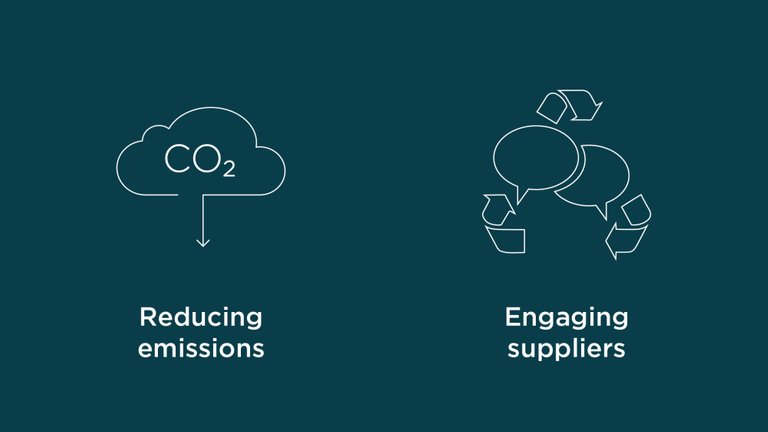
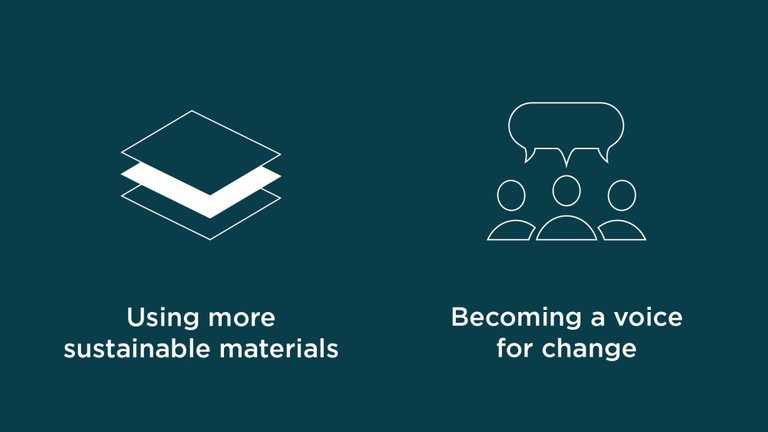
Source: Condé Nast
They structure their sustainability strategy in a 5-year period basis, which in turn organises itself in three phases involving four main areas of improvement.
Phases:
Phase 1: establishing the blueprint for a sustainable development, setting of a detailed strategy
Phase 2: integration of policies and actions
Phase 3: becoming the leading voice in the print media industry for development
Focus areas:
Reducing emissions: GHG assessment, green energy sources and optimization.
Engaging suppliers: working with sustainable suppliers, applying changes on supply chain.
Using more sustainable materials: regular audits, use of recycled and sustainable materials.
Becoming a voice for change: becoming a leader in their industry, supporting sustainability and encouraging global change.
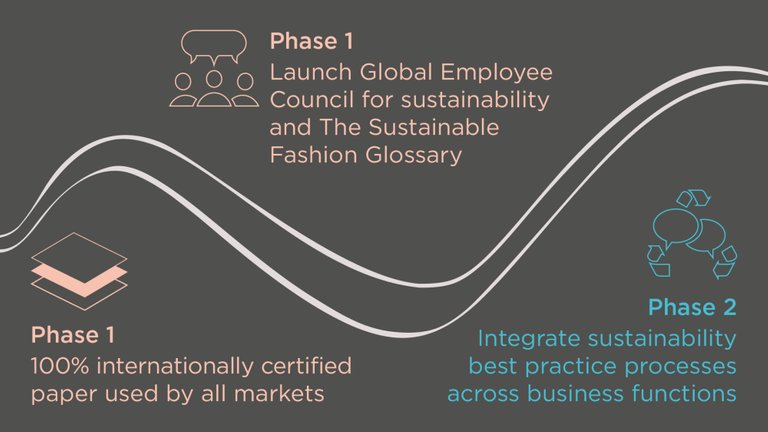
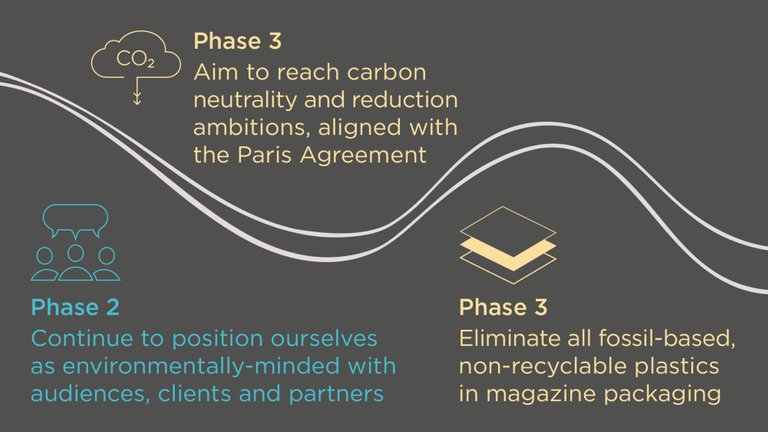
They also set out data about the detailed observation of their emissions in 2018, which they carried out in partnership with Research of Institutes of Sweden and with Business for Social Responsibility (BSR). The key numbers to remember from the assessment, which was conducted on a global scale, are the following:
Corporate emissions in 2018: 26,411 tons of CO2E.
- main sources of emissions: electricity consumption, travel.
Supply chain emissions: 314,822 tons CO2E
- main sources of emissions: print production and circulation.
Once they laid out this information, they started figuring out ways to reduce these numbers.
ASSESSMENT OF GHG EMISSIONS:
To reduce their carbon footprint they followed the Greenhouse Gas Protocols’ guidelines provided by the World Business Council for Sustainable Development and the World Resources Institute, which constitute official standards to investigate and account for GHG emissions.
The results of the report showed that the main source of pollution was at the supply chain level, especially at the level of the printing and distribution of magazines.
It must be kept into account that the accounting for paper and print pollution was done until the sale of their magazines, and they didn’t quantify the emissions that represent the recycling and reprocessing of fibers once the magazines are discarded by the consumer.
Below, the detailed statistics of every main source of the firm’s emissions represented in percentage.
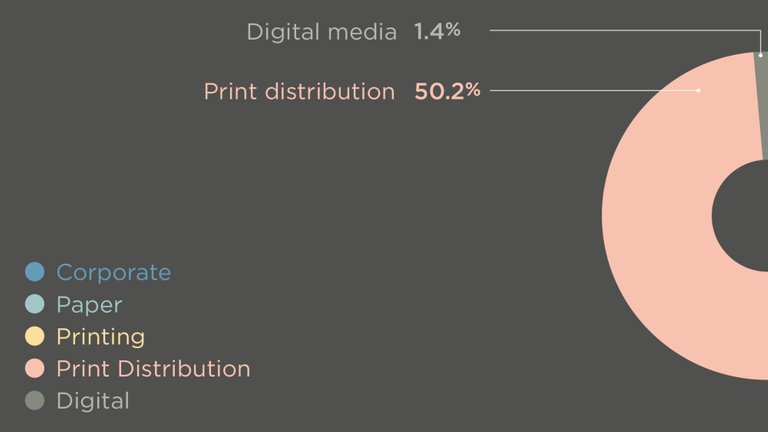
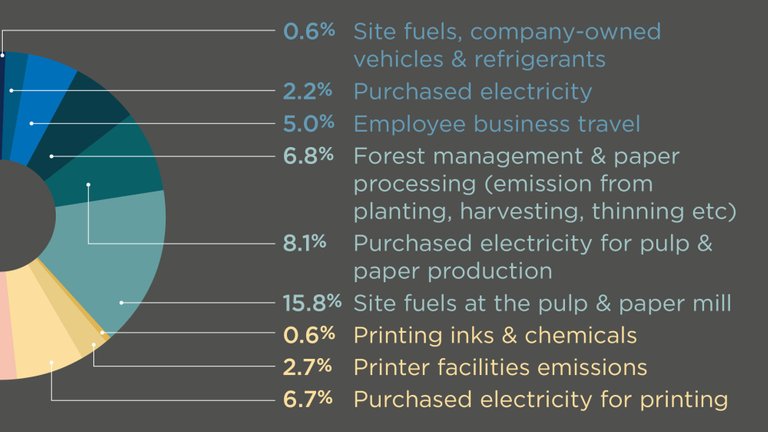
MATERIALS USAGE:
The firm’s main concern and source of pollution is the printing and distribution of magazines, which add up to 90,9% of their total GHG emissions.
To reduce these numbers, they have already started using certified paper, reduced their single-use plastic usage and incorporated alternative packaging materials such as bio-based compostable packaging made from potato starch, sugar cane and corn, recycled plastics made from post-consumer waste or paper envelopes, among others.
CONCLUSION:
The Condé Nast Sustainability Plan aims at developing a five year strategy that will represent the beginning of their journey towards becoming carbon neutral in 2030. For this goal, they have developed a series of strategies which prioritize those actions that have the biggest environmental impact, namely printing and magazine distribution.
The Plan embraces all areas of the corporation and covers all processes, ranging from the reorganization of supply chains and employee transportation to the incorporation of sustainable materials for their physical magazines and packaging.
In Tribalbi we believe that the fact that such a prominent corporation is taking major steps towards a more sustainable future is a clear indicator that the fashion industry is really rethinking its ways of doing and aiming at creating a future that respects and celebrates the environment and individuals from all around the world.
Read the full Sustainability Plan at:
https://www.condenast.com/sustainability-strategy#sustainability-vision
